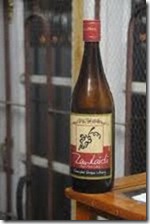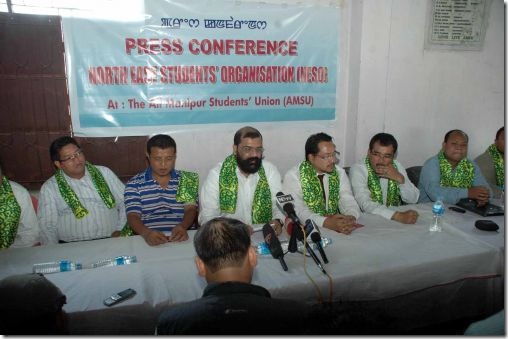By Sudhish Kamath 
SEEKING A FUTURE Some of those from the North East
Chennai, May 2 : From eight states, speaking different dialects, with long stories of struggle and a million dreams... the story of migrants from the North East who call this city home
They come from a far away land loosely labelled the North East, from the lesser-known states of India, to make a living in a world that does not speak their language.
In fact, they don't even speak each other's language. Arunachal Pradesh, Assam, Manipur, Meghalaya, Mizoram, Nagaland, Sikkim and Tripura — eight states, over a dozen popular spoken languages, scores of dialects, hundreds of tribes, thousands of stories of struggle and a million dreams. And one answer — migration. Studies indicate that about 4.15 lakh people have migrated from the North East to cities around the country in the last five years for better prospects — education and employment.
Chennai is today home to hundreds of such migrants, the number growing steadily with the increasing demand for manpower in the service sector. The hospitality industry thrives on this migrant population for its bulk recruitments, be it beauty parlours, salons, restaurants or hotels.
Though they hail from different states, these migrants stay together mostly in hostels or flats assigned by their employers. As P. Chuveirou, who calls herself Jenny, says: “Though I am from Manipur and can speak Manipuri, I belong to a Naga tribe and speak Poumai at home. There are ten of us who stay together, some are from Mizoram and some from Nepal and they don't speak Manipuri. So we communicate in English.”
Jenny has been working at Kenko Refloxology and Fish Spa in Express Avenue for the last six months. “I finished my Class XII and decided to leave home to be independent. About 60-70 per cent of the population in Manipur is into agriculture and about 10 per cent have their own business. The rest have government jobs.”
S. Byhnaki, who works with Jenny, belongs to the Mara tribe from Mizoram. She did a beautician course and has been working in Chennai since last year. “I speak Mara at home. I came here last year but since I can't speak Tamil, all my friends are from Manipur, Nepal and Bhutan. We get along well. The food isn't a problem as long as I get chicken biryani but I am excited about going home next month for a vacation.”
Naki will spend three days on a train and then another three changing buses before she reaches home in Mizoram. “It will take me six days to get home and then another six days to get back. Luckily, I have leave for 20 days,” she laughs.
Loving their independence
For some, the distance is liberating. Iralule loves her independence here, far away from Assam. “Most of my cousins are here. Sometimes, we go out and watch movies. I love to watch Rajnikant movies.”
Iralule works at Senza Spa in Besant Nagar, along with Esther Jojo and M.S. Achan from Manipur, and Jimmy Awomi and Lihola D. from Nagaland.
“Chennai is safe, welcoming and it is a perfect blend of a big city and a small town,” says Achan. “All my brothers and sisters now work in Chennai, so I don't feel very homesick.”
Achan came to Chennai eight months ago after completing Class XII. Jimmy's interest in the beauty industry made her study at the Nail Academy in Delhi while Lihola D. wasn't academically inclined. Esther just started working. None of these five want to go back to their homes in the North East simply because there are more opportunities here. They live together in a hostel and thanks to their friends there, they have now picked up a little Tamil.
Though most migrants have a problem with the local cuisine, they get used to it eventually. “We don't like the strong spices and tamarind used in the food. We prefer to eat rice with meat and chillies, food without any seasoning,” says Jimmy.
Survival demands that they adapt fast. Saptarshi Bhattacharya, originally from Agartala, Tripura, a senior journalist who made Chennai his home 13 years ago couldn't speak a word of Tamil. Today, he heads the city bureau for an English daily. “Thanks to the clerks at office, my friends in the Corporation and Tamil journalists I met on the beat, I could speak Tamil within six months. Within two years, I could read and translate Tamil press releases.”
Rachna Bhattarai, who hails from Meghalaya, came to Chennai five years ago after doing a hotel management and catering course in Kolkata. Today, after a stint with a few five-star hotels in the city, she has started her own event management business and specialises in organising parties.
“You get so much more exposure in hotels here. I would consider going back because there has been some development over the last few years,” says Rachna.
“Migration today happens because the youth have the confidence to pursue their dreams. Films and TV have redefined aspirations. However, insurgency has put the clock backwards. Though the infrastructure is developing, the exodus is a matter of concern because the governments have not been able to create enough opportunity,” Saptarshi explains.
Would he go back? Pat comes the answer, “I would think twice.”























